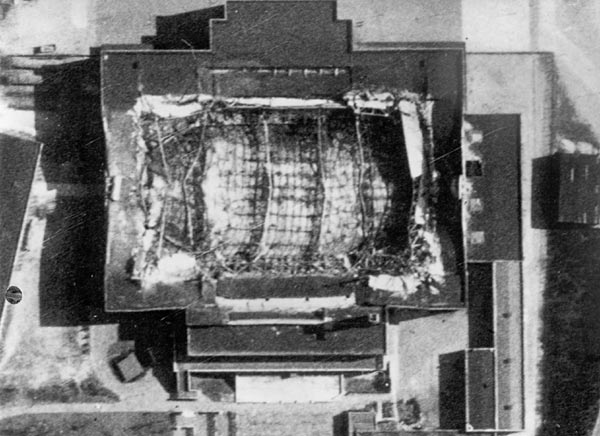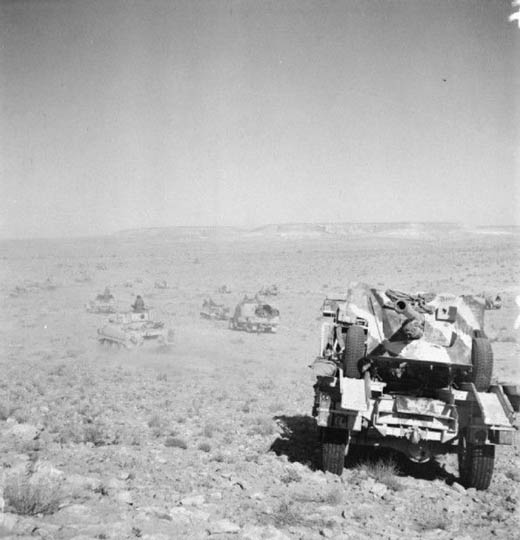Air Operations, Bismarcks
90th Heavy Bomb Group B-24s mount single-plane attacks against Gasmata.
[Air Operations, CBI
BURMA- 341st Medium Bomb Group B-25s based in India mount attacks against rail lines and the rail yard at Maymyo.
- 6 11th Medium Bomb Squadron B-25s and 11 P-40s dispatched to Lashio Airdrome fail to catch the returning Japanese Army strike aircraft on the ground, so they attack the town of Lashio.
- P-40s of the 23d Fighter Groupís 16th Fighter Squadron intercepting an incoming Japanese bomber attack near Yunnanyi Airdrome down one bomber and 11 Japanese fighters. One P-40 is lost.
Air Operations, Europe
BOMBER COMMANDEvening Ops:
- 201 aircraft are sent to Berlin, the first raid on this city in 14 months. Included in the total are 190 Lancasters and 11 Halifaxes. It is decided to use only 4-engine planes on this raid which come mostly from No. 5 Group.
- The raid is a disappointment because Berlin is beyond the range of either Oboe or Gee and the H2S radar is not yet available. Thick cloud is met on the route in and Berlin is covered in ground haze. Bombing is scattered but mostly in the southern part of the target area. The only hit of note is on the Daimler-Benz engine works which is seriously damaged. The attack comes as a surprise and air-raid warnings do not alert the citizens in time as many are away from home. As a result, even with the weakness of the bombing, 198 people are killed.
- 10,000 people attending a fair at the Deutschlandhalle have a remarkable escape. The air-raid police and the fire brigade manage to supervise the evacuation of every person and all the circus animals to open ground in parks around the hall. 21 people are slightly injured in the crush as the crowds leave the building. Just after the last person has left, a large number of incendiary bombs fall directly on the hall and it is completely burned out. None of the 10,000 people in the open near by are hurt.
- 1 Lancaster is lost on the raid.
The Shell of the Deutschlandhalle |
 |
- 2 Mosquitos attack Duisburg and Essen without a loss.
Air Operations, Libya
IX Bomber Command B-24s attack port facilities and the town of Tripoli.
[Air Operations, New Guinea
- 3d Light Bomb Group A-20s make numerous attacks on Sanananda prior to a new Allied ground offensive.
- V Bomber Command B-25s attack supply dumps around Lae
- 90th Heavy Bomb Group B-24s mount single-plane attacks against Finschhafen and a Japanese cruiser at sea.
Air Operations, Pacific
B-17s carry out a night raid on shipping at Rabaul.
[Air Operations, Solomons
- XIII Bomber Command B-17s attack the Kahili and Buin airfields on Bougainville.
- B-26s and 347th Fighter Group P-39s based at Guadalcanal provide direct support for the US ground offensive on Guadalcanal.
Battle of the Atlantic
Fortress 'G' of No 208 Squadron is patrolling in support of convoy ON-160 when she spots a surfaced submarine about 5 miles on the port bow. The aircraft drops several depth charges, four of them straddling the submarine. U-337 is observed to sink by the stern.
| Class | Type VIIC |
| CO | Oberleutnant zur See Kurt Ruhwiedel |
| Location | N Atlantic, SW of Iceland |
| Cause | Air attack |
| Casualties | 47 |
| Survivors | None |
Diplomatic Relations
Iraq declares war on Germany, Italy and Japan.
[Eastern Front
There is continuous heavy fighting in all sectors. In the Caucasus, von Kleist's Army Group A continues to pull back in good order. Von Manstein is still fighting to defend Rostov, and in the north the Russians continue to try to clear and widen the supply route to Leningrad. This route is nowhere wider than 6 miles and it is so much under German fire that it becomes known as the 'Corridor of Death'. At Stalingrad the Germans now hold only about 250 square miles of territory, about half as much as 5 days ago. Rokossovsky's armies continue their furious attempts to wipe out the Germans.
Italian forces are routed by the Russians west of the Don as the Red Army launches a major offensive across the upper reaches of the river.
SOUTHERN SECTORThe expected collapse of the Hungarian 2nd Army happens as Soviet armies pour west.
Inside the Stalingrad pocket the Germans lose Pitomnik airbase as Soviets advance toward the city and the only remaining airbase at Gumrak. By this stage of the battle the Soviet spearheads are only 6 miles west of the Volga.
German forces in the Caucasus withdraw but come under attack by the 44th Army. Luckily for Army Group A the Soviet attacks are badly coordinated and unable to disrup the withdrawal.
[Guadalcanal
The CG, XIV Corps, orders a second co-ordinated westward offensive in order to extend positions through Kokumbona to the Poha River. A Composite Army-Marine Div (CAM) is formed consisting of the 6th Marines and the 182nd and the 147th Infantry Regiments and the 2nd Marine and the Americal Div artillery units. The division is to drive westward on a 3,000-yard front in the coastal sector while the 25th Div attacks southwestward on the corps southern flank to envelop the enemy's southern flank. In the 35th Infantry sector, B Company reinforced, advances westward to the corps objective, some 1,500 yards west of the Sea Horse, without opposition, gaining positions on the precipice overlooking the southwest fork of the Matanikau. The 2nd Battalion CO decides to make a double envelopment attack against the Gifu on the 17th and sends elements from Hill 27 to Hill 42 to attack from the northwest as other force drive northward from Hill 27.[MORE]
[New Guinea
After the usual air and artillery preparation converging attacks near Sanananda by the American 163rd Infantry and the Australian 18th Brigade both make progress. On the left, the Australian 18th Brigade drives quickly along the Killerton trail to the coast and clears a broad coastal strip from Cape Killerton to the outskirts of Sanananda Vilage. On the Soputa-Sanananda road, the 1st Battalion, 163rd Infantry, having been relieved of the task of clearing an enemy pocket by the 3rd Battalion, attacks northward, bypassing a strongpoint immediately ahead to gain a position some 400 yards west of the road. The 3rd Battalion finishes clearing the pocket between Musket and Fisk. From the trail junction east of the coconut plantation, the 2nd Battalion of the 163rd Infantry hacks its way southeast of the Soputa-Sanananda road about 1,000 yards behind the enemy's main line and makes contact with the 1st Battalion and the Australian 18th Brigade. Attacking toward Sanananda from the east, the 1st Battalion of the 127th Infantry makes negligible progress along the coastal road.
[North Africa
LIBYAAfter passing through the enemy's main positions at Buerat, the British 8th Army pushes energetically toward Tripoli. The coastal force reaches Churgia and the enveloping force crosses Wadi Zem Zem. The 8th Army and Free French, advancing from southern Libya, join forces.
Royal Artillery Open Up |
 |
Pacific
- The US submarine Greenling (SS-213) sinks the Japanese transport Kimposan Maru (3261t) west of Kavieng, New Ireland.
- The US submarine Growler (SS-215) attacks a Japanese convoy sinking the army passenger-cargo ship Chifuku Maru (5857t) 11 miles north of Waton Island, Palaus.